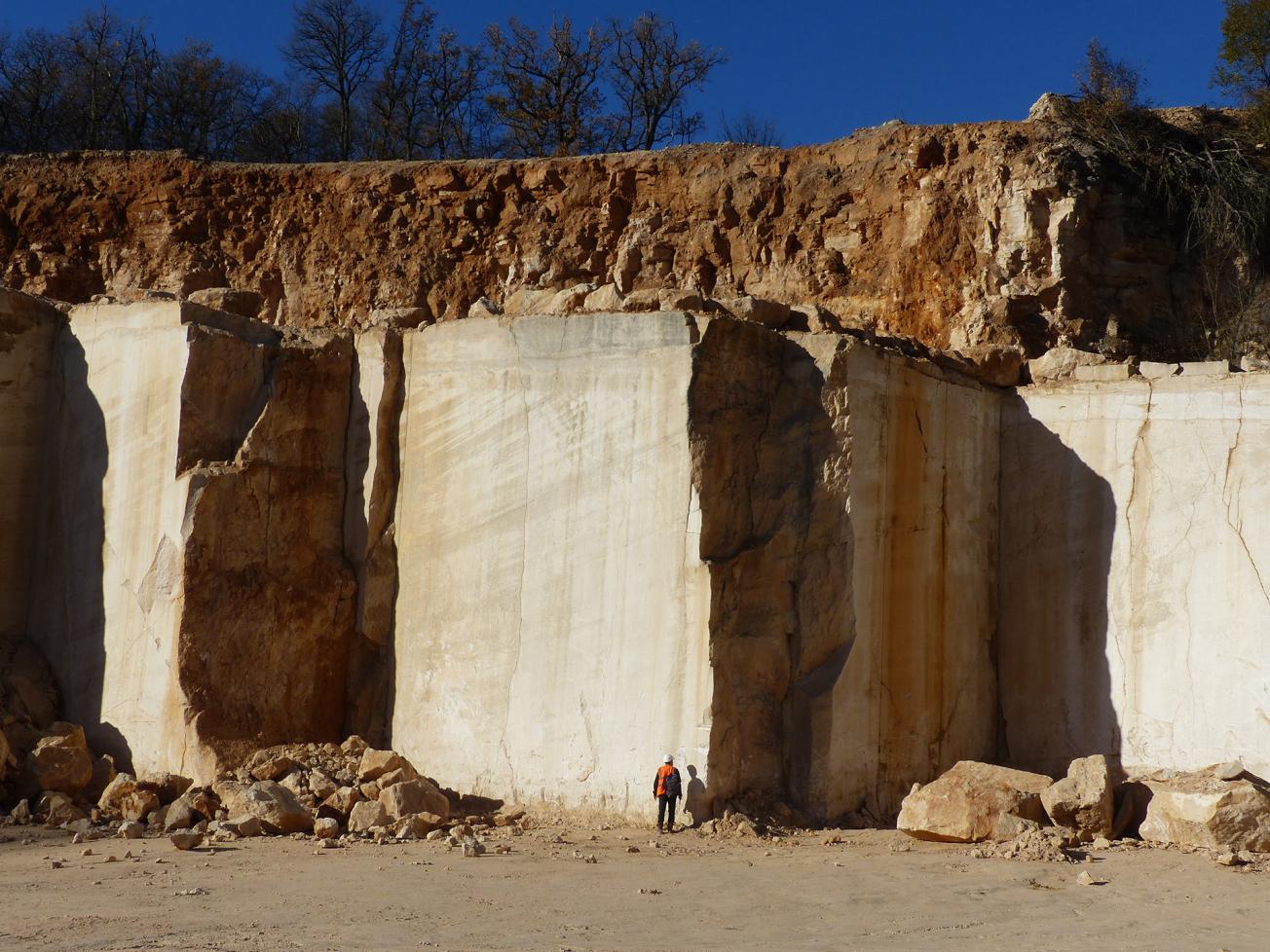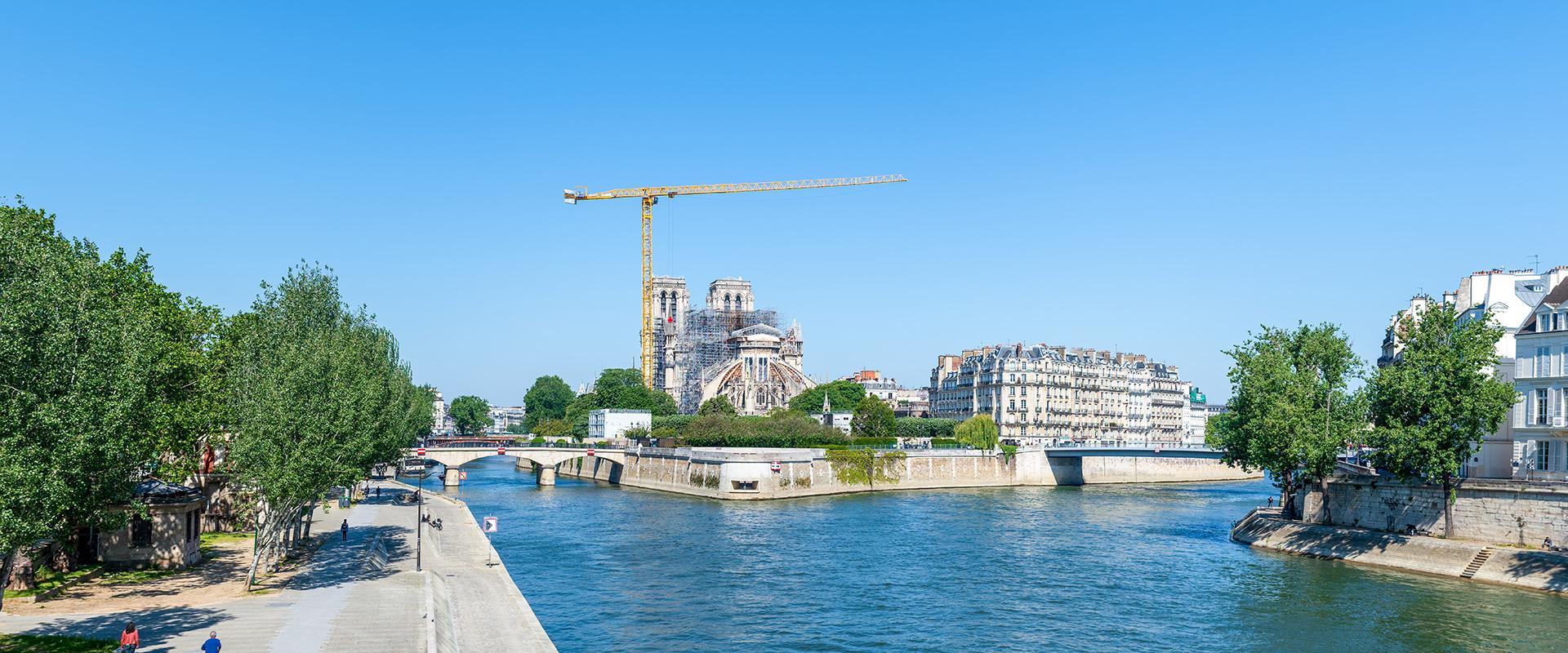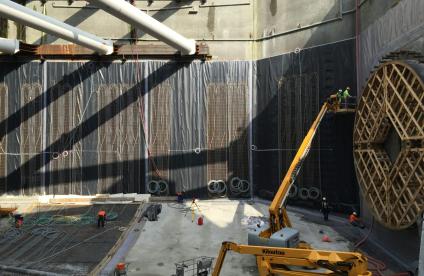Restoration of Notre-Dame cathedral in Paris
The fire that destroyed Notre Dame cathedral on 15 April 2019 caused extensive damage to stone parts of the building.
Restoration therefore requires new stones that are compatible with the building, in larger quantities than those usually required for maintaining and restoring historical monuments.
Identifying, characterising and selecting new stones
To meet this need, the public body and BRGM have established a research and development programme to identify, characterise and select new stones that are aesthetically and physically compatible with the damaged stones. This programme will result in a methodological reference guide for the cathedral, which can also be used for other buildings in the Paris area.

Cutting face of a limestone quarry.
© BRGM - S. Andrieu
A methodology applicable to other buildings in the Paris area
The research methodology includes geological investigations in quarries and laboratory tests on stone samples. The programme initiated in July 2020 brings together geologists, sedimentologists, geomaticians and laboratory technicians from BRGM. It also involves the Ministry of Culture's Historic Monuments Research Laboratory (LRMH) for its in-depth knowledge of the cathedral stone.
The original stone was extracted from the subsoil of Paris. It consists of limestone of the Lutetian age, a geological stratum formed 41 to 48 million years ago. There are outcrops of this type in many parts of the Paris Basin, the largest of the three French sedimentary basins, covering most of the northern half of France with an area of about 110,000 km2. Building stone is still excavated today in about ten quarries north of Paris, and in the Oise and Aisne departments. This Lutetian limestone results from a complex sedimentation process, which will be explored as part of the programme signed between the public body and BRGM to identify the characteristics of the stone suitable for restoring the cathedral.
The study programme is scheduled for completion in mid-2021 and will focus first on active quarries, followed by unexploited deposits that could, if necessary, provide the site with stone compatible with existing cathedral stone.







